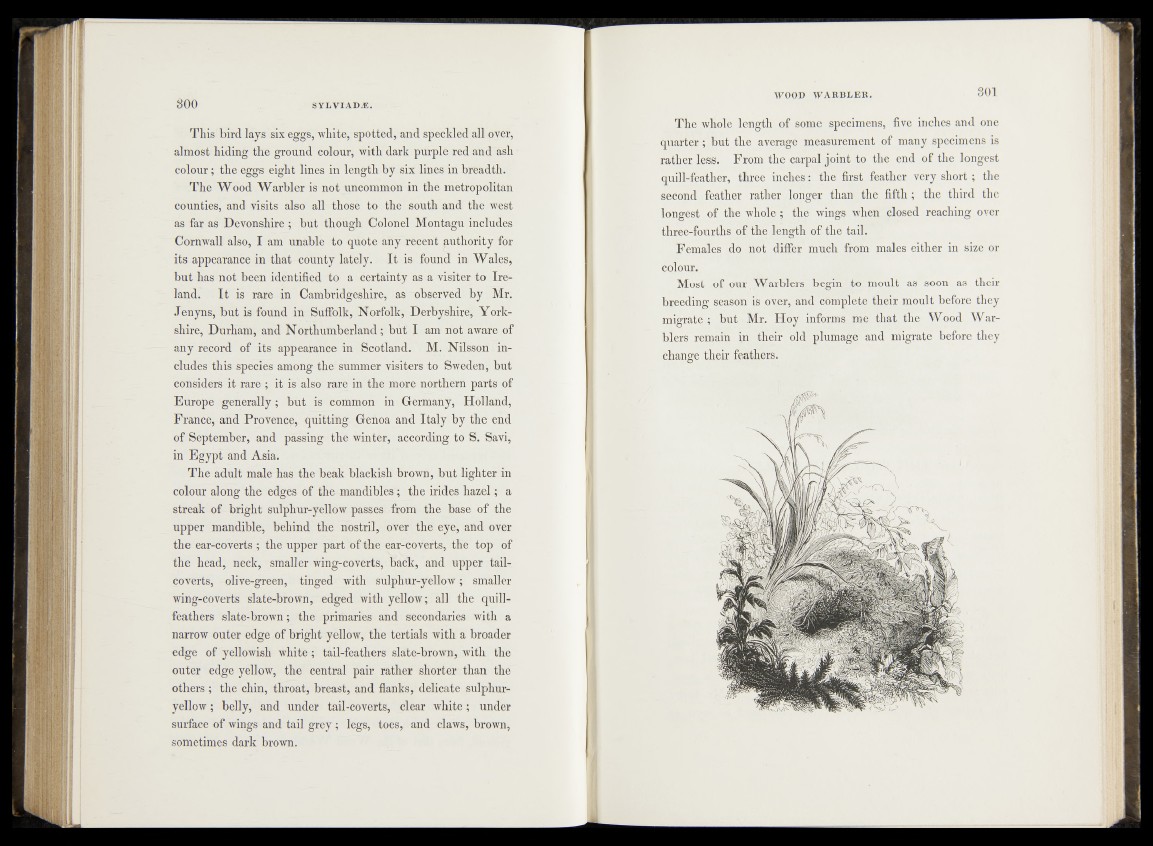
800 SYLVIAD.E.
This bird lays six eggs, white, spotted, and speckled all over,
almost hiding the ground colour, with dark purple red and ash
colour; the eggs eight lines in length by six lines in breadth.
The Wood Warbler is not uncommon in the metropolitan
counties, and visits also all those to the south and the west
as far as Devonshire ; but though Colonel Montagu includes
Cornwall also, I am unable to quote any recent authority for
its appearance in that county lately. I t is found in Wales,
but has not been identified to a certainty as a visiter to Ireland.
It is rare in Cambridgeshire, as observed by Mr.
Jenyns, but is found in Suffolk, Norfolk, Derbyshire, Yorkshire,
Durham, and Northumberland; but I am not aware of
any record of its appearance in Scotland. M. Nilsson includes
this species among the summer visiters to Sweden, but
considers it rare ; it is also rare in the more northern parts of
Europe generally; but is common in Germany, Holland,
France, and Provence, quitting Genoa and Italy by the end
of September, and passing the winter, according to S. Savi,
in Egypt and Asia.
The adult male has the beak blackish brown, but lighter in
colour along the edges of the mandibles; the irides hazel; a
streak of bright sulphur-yellow passes from the base of the
upper mandible, behind the nostril, over the eye, and over
the ear-coverts ; the upper part of the ear-coverts, the top of
the head, neck, smaller wing-coverts, back, and upper tail-
coverts, olive-green, tinged with sulphur-yellow; smaller
wing-coverts slate-brown, edged with yellow; all the quill-
feathers slate-brown; the primaries and secondaries with a
narrow outer edge of bright yellow, the tertials with a broader
edge of yellowish white; tail-feathers slate-brown, with the
outer edge yellow, the central pair rather shorter than the
others ; the chin, throat, breast, and flanks, delicate sulphur-
yellow ; belly, and under tail-coverts, clear white; under
surface of wings and tail grey; legs, toes, and claws, brown,
sometimes dark brown.
WOOD WARB L ER .
The whole length of some specimens, five inches and one
quarter; but the average measurement of many specimens is
rather less. From the carpal joint to the end of the longest
quill-feather, three inches: the first feather very short; the
second feather rather longer than the fifth ; the third the
longest of the whole ; the wings when closed reaching over
three-fourths of the length of the tail.
Females do not differ much from males either in size or
colour.
Most of our Warblers begin to moult as soon as their
breeding season is over, and complete their moult before they
migrate ; but Mr. Hoy informs me that the Wood War-
blers remain in their old plumage and migrate before they
change their feathers.
H i
m
Wv
wM
iSBli
SfiS :w
i
H